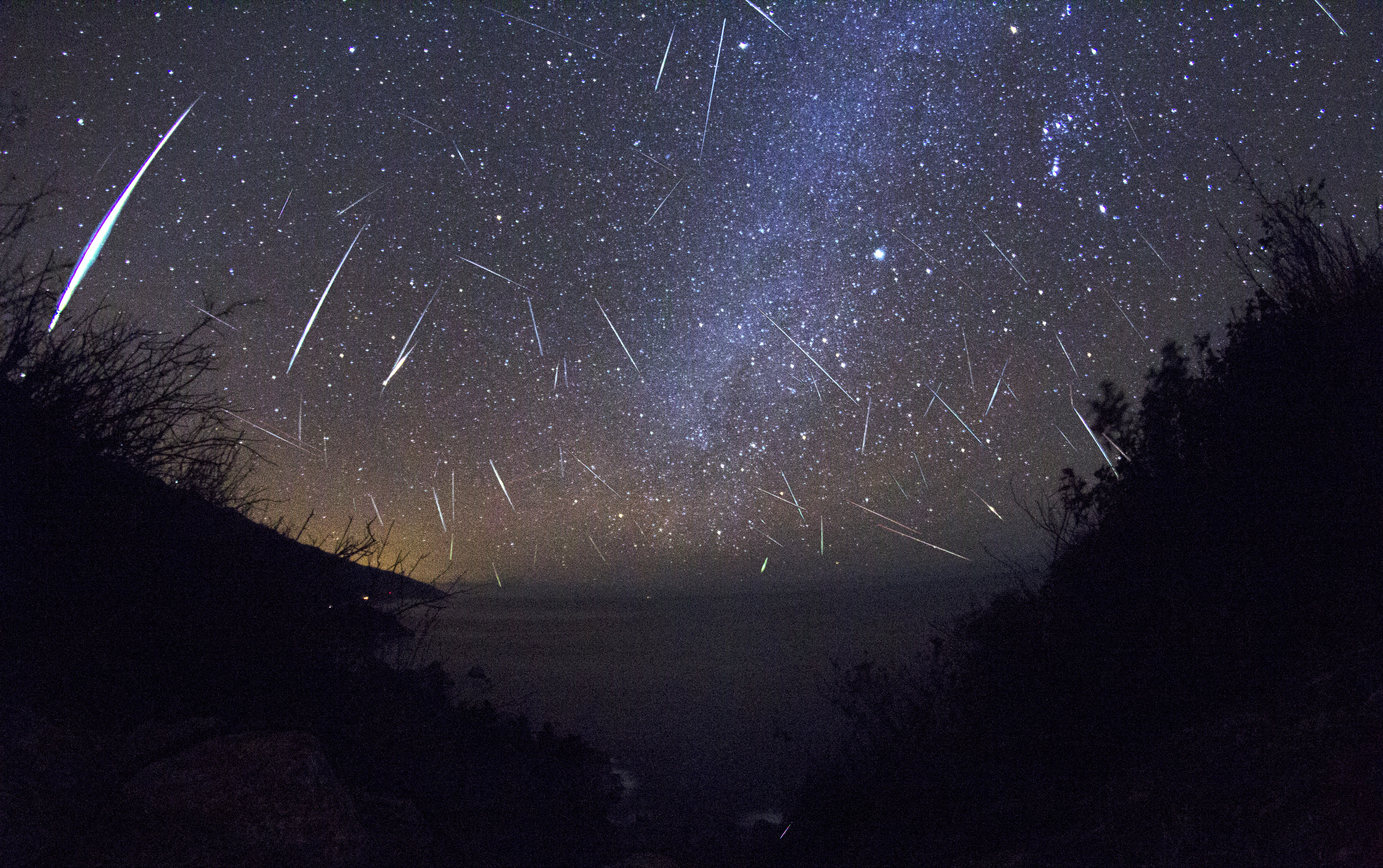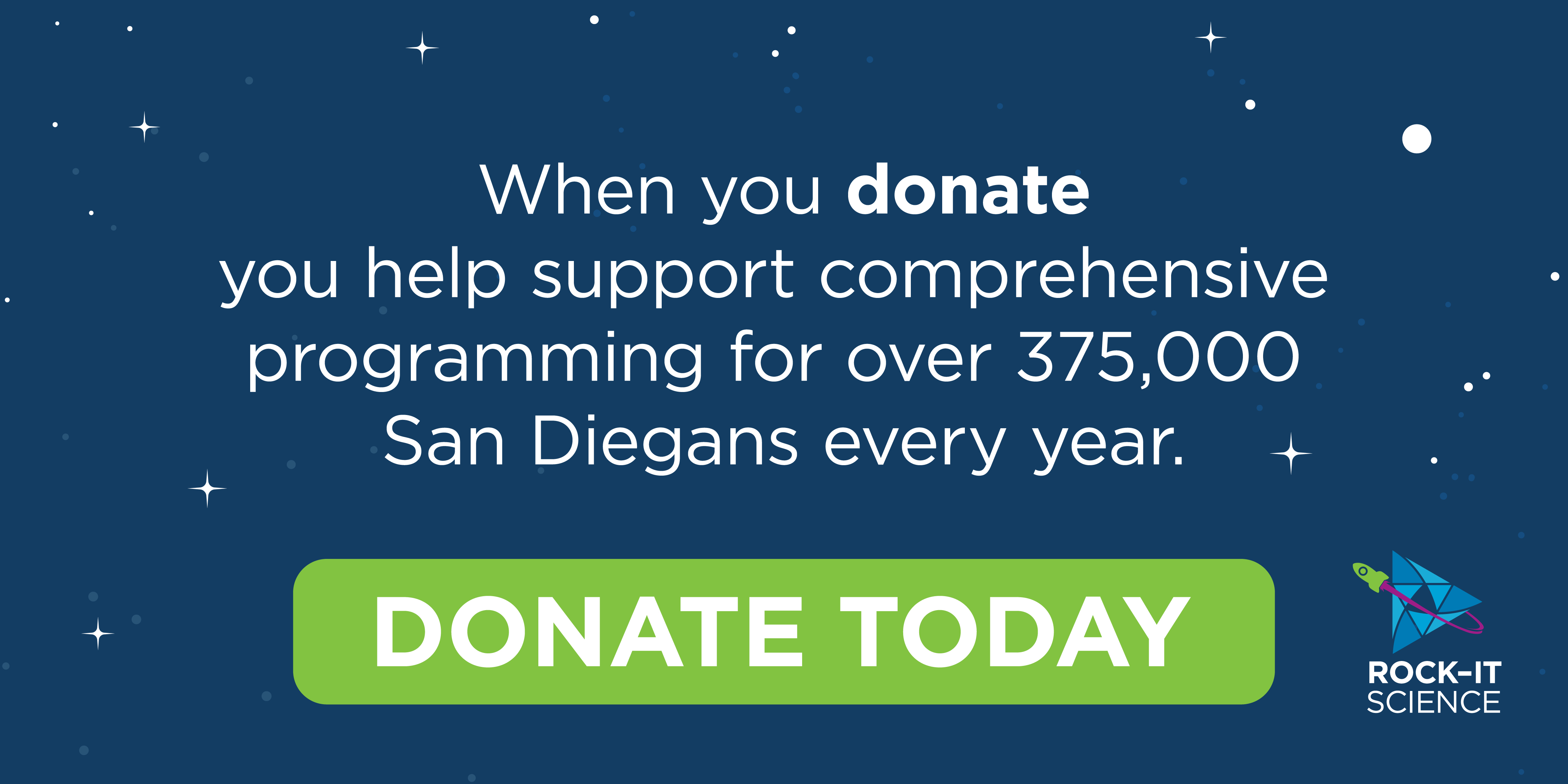
Get Ready for the Geminid Meteor Shower!

By Dr. Lisa Will, Resident Astronomer at the Fleet Science Center.
The Geminid meteor shower occurs every December and, this year, it’s expected to peak the night of December 13 through the early morning of December 14. Astronomers can predict meteor showers because we know what causes them. A meteor shower occurs when the Earth passes through the orbit of a comet, or in the case of the Geminids, an unusual dust-emitting asteroid named 3200 Phaethon. Tiny bits of ice and dust from these objects hit the Earth’s atmosphere, causing a streak of light across the sky—a meteor! Because the Earth crosses these comets and asteroid orbits at the same time every year, we can predict the nights when you are most likely to observe meteors. The Geminid meteor shower puts on a consistently good show, with dozens of fast-moving meteors per hour visible in a dark sky.
One of the best things about meteor showers is that you don’t need any special equipment to observe them, just an unobstructed view of the sky! The Geminids are named after the constellation Gemini, which is the point on the sky that the meteors will appear to emerge from. The Geminids will peak the night of December 13 through the early morning of December 14. Gemini rises in the eastern sky by 9 p.m. and your chances of seeing a meteor improve as the constellation gets higher in the sky. The best time to spot Geminids is after midnight, with the maximum number of meteors peaking around 2 a.m. Luckily, there won’t a bright Moon to compete with your meteor observations this year—the waning crescent Moon doesn’t rise until closer to dawn!
So, go outside with a blanket and a warm beverage and enjoy the Geminid meteor shower!
Wishing you clear skies!
Resources:
https://www.timeanddate.com/astronomy/meteor-shower/geminids.html http://earthsky.org/astronomy-essentials/everything-you-need-to-know-geminid-meteor-shower